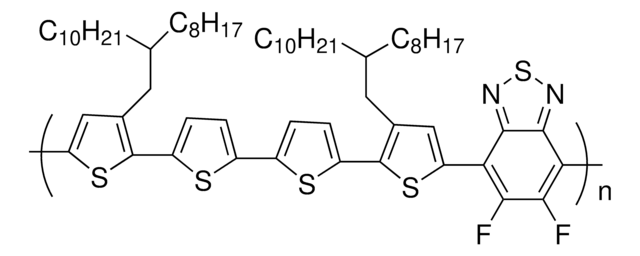推荐产品
描述
Band gap: 1.9 eV
形式
solid
分子量
average Mw 100,000-140,000
缺失
0.5 wt. % TGA, 409 °C
mp
270-300 °C
转变温度
Tm >400 °C
λmax
576 nm
轨道能量
HOMO -5.5 eV
LUMO -3.6 eV
OPV设备性能
ITO/MoO3-Al/PCDTBT:PC71BM/MoO3/Al
ITO/PEDOT:PSS/PCDTBT:PC71BM (1:4)/TiOxAl
ITO/PEDOT:PSS/PCDTBT:PC71BM/Al
半导体性质
P-type (mobility=6×10−5 cm2/V·s)
正在寻找类似产品? 访问 产品对比指南
一般描述
应用
WGK
WGK 3
闪点(°F)
Not applicable
闪点(°C)
Not applicable
商品
The development of high-performance conjugated organic molecules and polymers has received widespread attention in industrial and academic research.
Organic materials in optoelectronic devices like LEDs and solar cells are of significant academic and commercial interest.
Organic photovoltaics (OPVs) represent a low-cost, lightweight, and scalable alternative to conventional solar cells. While significant progress has been made in the development of conventional bulk heterojunction cells, new approaches are required to achieve the performance and stability necessary to enable commercially successful OPVs.
Thin, lightweight, and flexible electronic devices meet widespread demand for scalable, portable, and robust technology.
我们的科学家团队拥有各种研究领域经验,包括生命科学、材料科学、化学合成、色谱、分析及许多其他领域.
联系技术服务部门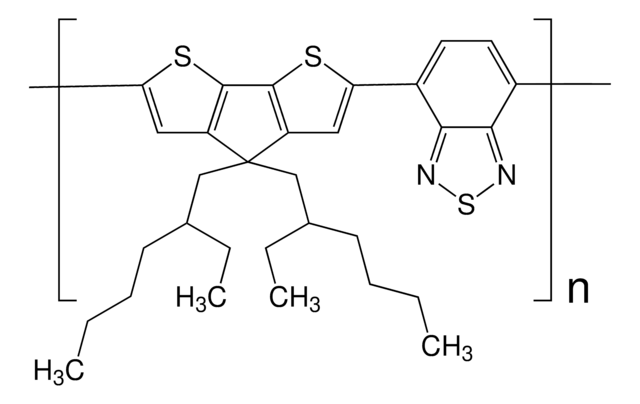
![聚 [2,6′]-4,8-二(5-乙基己基噻吩)苯并 [1,2-b;3,3-b] 二噻吩 ] {3-氟-2 [(2-乙基己基)羰基] 噻吩 [3,4-b] 噻吩二基 })](/deepweb/assets/sigmaaldrich/product/structures/187/203/ca94f947-403e-4832-8656-fc754d4148f5/640/ca94f947-403e-4832-8656-fc754d4148f5.png)
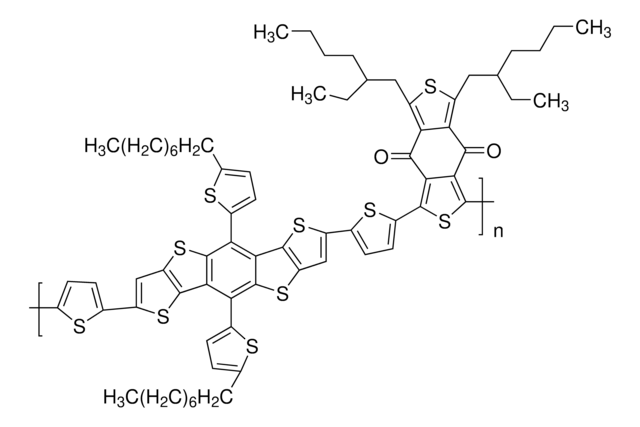
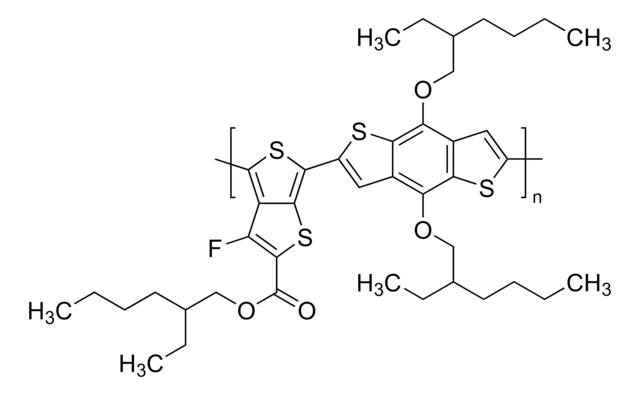
![聚[(9,9-二正辛基芴基-2,7-二基)-alt-(苯并[2,1,3]噻二唑-4,8-二基)] average Mn ≤25000](/deepweb/assets/sigmaaldrich/product/structures/428/661/1c4ebb98-9d51-48c0-96c7-e556ca425aa4/640/1c4ebb98-9d51-48c0-96c7-e556ca425aa4.png)
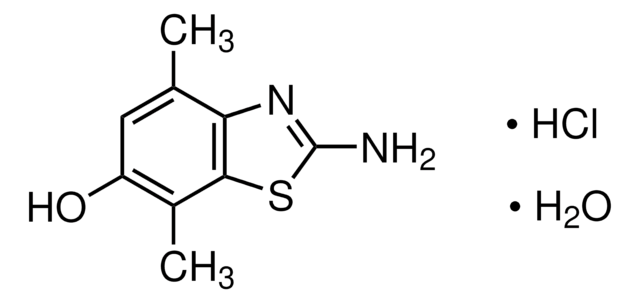
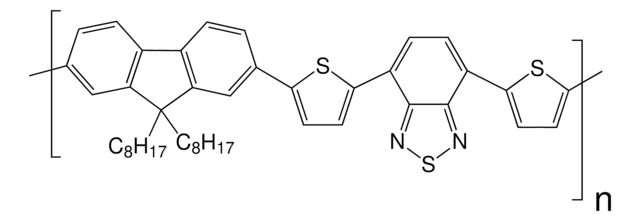
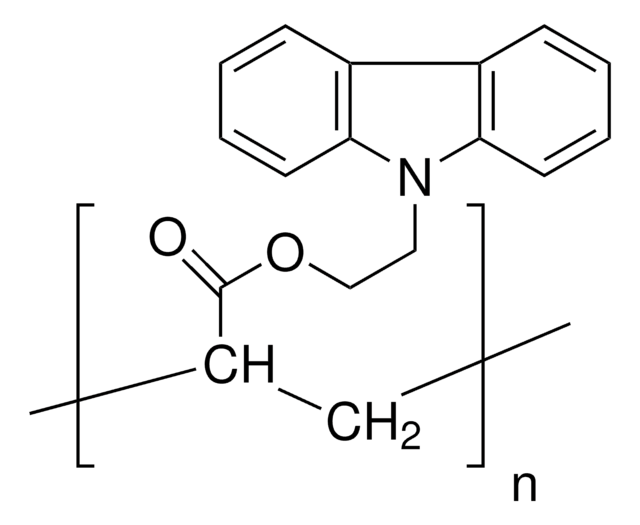
![聚[(9,9-二辛基芴基-2,7-二基)-co-并噻吩] 99.9%](/deepweb/assets/sigmaaldrich/product/structures/309/000/8b4a3f54-7765-4aca-96c4-74ce328d455d/640/8b4a3f54-7765-4aca-96c4-74ce328d455d.png)
